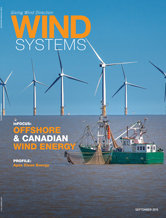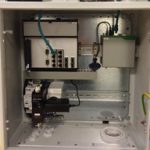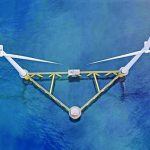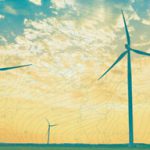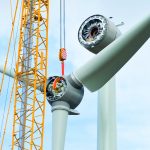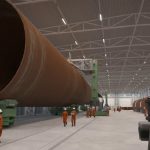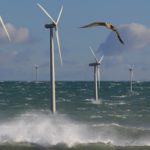Canada can get more than one-third of its electricity from wind energy without compromising grid reliability — and at the same time realize economic and environmental benefits, according to a wind-integration study issued by the Canadian Wind Energy Association (CanWEA).
The Pan-Canadian Wind Integration Study (PCWIS) is the first to take a detailed national, system-level look at the production costs and benefits of high wind-energy penetration in Canada and helps identify potential operational challenges and the most efficient solutions.
The study presents utilities, system operators, and policymakers with data they’ve never had access to before. It provides a technical platform that can be used to inform the development of provincial, regional, and North American energy policies that are realistically achievable and technically sound. The study serves as a solid foundation for further research and analysis in this area.
“Understanding the implications of integrating a greater amount of wind energy into Canada’s electrical system contributes to our goal of developing clean-energy resources and moving our country towards a low-carbon economy,” said Jim Carr, Canada’s minister of Natural Resources. “The Government of Canada supports clean energy technologies that encourage energy efficiency, bring cleaner renewable energy onto a smarter electricity grid, and promote sustainable economic growth and competitiveness.”
The study is timely, given Canada’s commitment to shift to a low-carbon economy. It considers four pan-Canadian scenarios with wind energy supplying between 5 percent and 35 percent of the country’s forecast system load in 2025, including power flows across the border. The analysis concludes that 20-percent and 35-percent wind penetrations can be achieved in a reliable and efficient manner.
“Affordable, reliable, zero-emission electricity generation, like wind energy, will reduce greenhouse gas emissions by helping to clean the electricity grid so that clean electricity can be used to power vehicles, buildings, and industry, and generate export opportunities,” said CanWEA President Robert Hornung. “This technical study contributes to our understanding of how we can make the most effective use of a valuable, but underutilized, clean-energy resource to make the kinds of deep emissions cuts ultimately needed to address climate change.”
Recovering the Costs
The findings speak to the costs of integrating higher penetrations of wind energy. With respect to the estimated cost of new transmission tie-lines between provinces and between Canada and the U.S. needed to accommodate high penetrations of wind, it shows costs would be recovered within a few years. As well, the additional backup generation required to balance wind energy’s variability is shown to be modest, amounting to a small fraction of total wind-generating capacity.
At the installation levels studied, wind production displaces output from the most expensive and least efficient power plants, which the scenarios show to be mostly natural gas- and coal-fired generation. As fossil fuels are displaced with zero-carbon wind energy, greenhouse gas emissions are reduced.
The economic benefits of the wind resources in the study scenarios have two components: Firstly, there is a reduction in production costs in Canada as a result of displacing thermal generation, which has fuel costs to consider, with wind energy that has no fuel costs. Secondly, there are revenues from increased exports to the U.S. The study did not quantify investment costs of new generation or its interconnection.
“While the benefits of wind energy are widely known, this nearly three-year-long project helps provide decision makers with insights into how those benefits can be most efficiently realized as Canada takes steps to make use of this vast renewable resource,” said Bahman Daryanian of GE Energy Consulting Group, who was the study’s technical director and project manager.
“The project confirms Canada has high-quality wind resources in all provinces, and makes laudable contributions to the study and understanding of wind-integration issues,” said Charlie Smith, executive director for the Utility Variable-Generation Integration Group (UVIG) and an active member of the study’s Technical Advisory Committee. “A notable example is its examination of what changes can be made in the operations and forecasting of existing thermal and hydroelectric generation to take advantage of available wind energy in a cost-effective way.”
Partnership Project
“The project team included among their efforts a number of sensitivity analyses to confirm the PCWIS results are robust and dependable; the Canadian wind resource is outstanding and matches the load over the course of a year remarkably well,” said DNV GL’s Dariush Faghani, the project adviser to CanWEA.
GE executed the project in partnership with Vaisala, Electranix, EnerNex, and Knight Piésold. Guidance was provided by CanWEA, DNV GL, and a Technical Advisory Committee that included representatives from: Alberta Electric System Operator (AESO), BC Hydro, Hydro-Québec, Independent Electricity System Operator (IESO), ISO-New England (ISO-NE), Manitoba Hydro, Midcontinent Independent System Operator (MISO), National Renewable Energy Laboratory (NREL), New York Independent System Operator (NYISO), SaskPower, Utility Variable-Generation Integration Group (UVIG), and Western Electricity Coordinating Council (WECC).
The PCWIS was co-funded by CanWEA and Natural Resources Canada (NRCan), through the ecoEnergy Innovation Initiative. Environment and Climate Change Canada provided data and modeling input. The contents of the study do not necessarily reflect the opinions of the Government of Canada nor those of the Technical Advisory Committee members or the organizations they represent.
Source CanWEA
For more information, go to www.canwea.ca
















